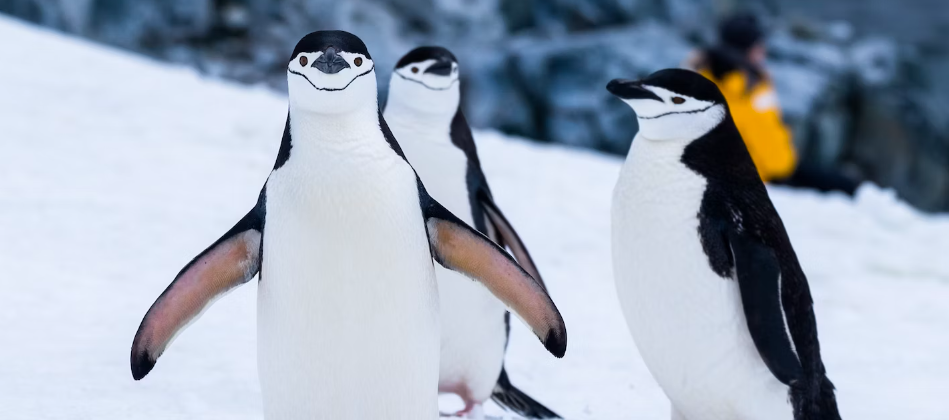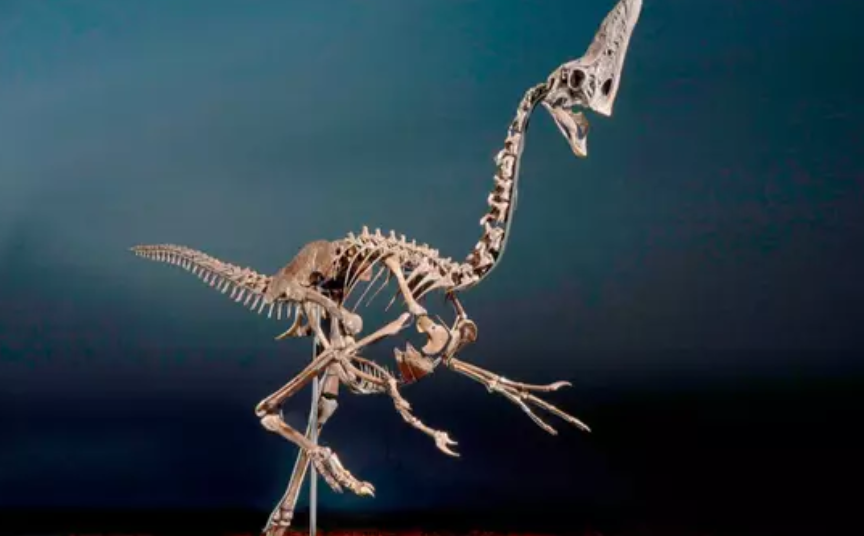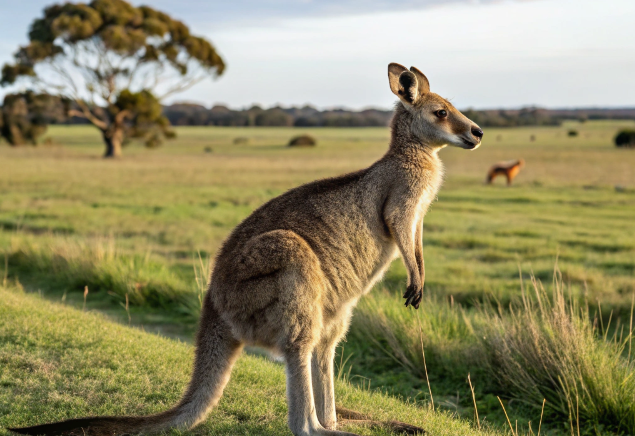Did You Know? Penguins Gift Pebbles for This Reason

© Derek Oyen / Unsplash
Turns out Madonna was definitely right when she sang “Cause we are living, in a material world”! And you would not believe who proves this verse. It is not our human selves obsessed with capitalism, it is actually another un-feathered pal of ours. And that is the penguin! Yes, you have read that right. Apparently, penguins gift their partners pebbles as proposal gifts! Talk about being given a “huge rock”!
What Are Penguins?
Penguins are birds that can not fly. Together with around 60 other species, Penguins are part of the flightless group. They are known for their distinctive appearance, including a black-and-white coloration, short wings that have evolved into flippers, and a waddling gait. Penguins are primarily found in the Southern Hemisphere, although some species can be found in more temperate or even tropical regions. This includes places such as around Antarctica, the sub-Antarctic islands, and along the coasts of South America, Africa, Australia, and New Zealand. Some species also inhabit more temperate and even equatorial regions.
Why Do Penguins Gift Pebbles?
In the challenging environment of the Antarctic region, penguins face a unique set of circumstances when it comes to nesting. Unlike birds in warmer climates that have an abundance of materials like twigs, leaves, and shiny objects to build their nests or gift their partners, penguins in Antarctica have very limited resources at their disposal. However, they have found a remarkable solution to this problem: pebbles.

Among the penguin species in the Antarctic region, Gentoo penguins are particularly skilled at selecting the right pebbles for their nests. These resourceful birds use their beaks to gather pebbles from the barren landscape and carry them to their mates. This act of sharing pebbles is not just a practical endeavor but also a symbolic one that acknowledges the bond between the two penguins.
So, the Reason Behind is…
Pebble nests have several advantages in the cold, wet Antarctic environment. First, they allow snow and ice to pass through the gaps between the pebbles, preventing the nest from becoming waterlogged. This is crucial for keeping the penguin eggs and newly hatched chicks dry and insulated from the damp ground, where they could easily succumb to the extreme cold. By elevating their nests with pebbles, penguins ensure that their offspring have a better chance of survival in this harsh environment.
The act of selecting and sharing pebbles for nest-building among penguins is the cooperative and social nature of penguins. It also plays a vital role in ensuring the success of their breeding efforts, as the right nest structure is essential for protecting their vulnerable young. These adaptations showcase the remarkable strategies that penguins have evolved to thrive in one of the world’s most challenging and resource-scarce environments.
Do Other Animals Do Something Similar?
Different animal species have unique and fascinating ways of expressing love, forming bonds, and reproducing:
1. Humpback Whales
These majestic marine mammals use songs as their romantic gestures. Male humpback whales, known for their complex vocalizations, sing amorous tunes during mating season to attract females. Research suggests that they incorporate intricate syntax into their songs to convey more information. However, competition is fierce among males, as others may imitate successful song styles to win over their desired mates.
2. Sea Otters
Sea otters take a cuddly approach to companionship. When they need a deep rest in the water, they often lie on their backs. This position provides them with the perfect excuse to hold paws with their significant otter. To prevent drifting apart while they sleep, sea otters either grasp onto each other or wrap themselves in kelp. It’s worth noting that sea otters are polygynous, meaning a single male can mate with multiple females, leading to competitive mating dynamics.
3. Seahorses
Seahorses engage in a delicate courtship dance, striving to synchronize their movements perfectly. Studies show that seahorse couples spend hours swimming side by side, mirroring each other’s actions. The longer they stay together, the more successful they become at breeding. After mating, male seahorses take on a remarkable role by carrying the developing eggs in a pouch on their bodies for about 45 days. This extraordinary parental care allows the females to rest until the offspring are ready to be born.
4. French Angelfish
Monogamous French Angelfish are rarely seen apart from each other and are almost always observed in pairs. They cooperate closely to defend their feeding territory from other hungry fish, showcasing the power of teamwork in strengthening their bond. When they reunite after brief separations, they engage in a behavior known as “carouseling,” circling around each other as a form of greeting and reaffirmation of their partnership.
Fun Facts About Penguins
Here are some fun facts that make penguins so unique:
Physical Characteristics
Penguins are easily recognizable by their striking black and white plumage, which helps camouflage them while swimming. Their counter-shaded coloration acts as a form of camouflage, making them less visible to predators and prey in the water. This coloration also aids in regulating their body temperature. Their bodies are streamlined for efficient swimming, with flipper-like wings that have evolved into powerful flippers for propulsion through the water. On land, penguins have a distinctive waddling gait due to their short legs and upright posture.
Habitat and Distribution
Penguins are primarily associated with cold and temperate regions of the Southern Hemisphere. The largest colonies are found in and around Antarctica, where Emperor Penguins are especially well-known. Other species inhabit sub-Antarctic islands, the coasts of South America, Africa, Australia, and New Zealand. However, some penguin species, such as the Galápagos Penguin, are adapted to more temperate or even equatorial regions.
Adaptations for Marine Life
Penguins are highly adapted for life in the water. Their powerful flippers enable them to swim with remarkable agility and speed. They use their webbed feet as rudders for steering. Penguins have excellent vision both underwater and on land, which helps them locate prey and avoid predators. They are also equipped with a special gland that helps them excrete excess salt from the seawater they ingest while feeding.
Dietary Needs
Penguins are carnivorous and primarily feed on a diet of fish, squid, and krill. Their foraging abilities are impressive, and some penguin species can dive to great depths in pursuit of prey. Adélie Penguins, for example, are known to dive as deep as 575 feet (175 meters).
Breeding and Nesting
Penguins are well-known for their breeding behavior. They typically form colonies, ranging in size from a few individuals to thousands, depending on the species. Penguins usually lay one or two eggs in nests made of rocks or pebbles. Both parents take turns incubating the eggs and caring for the chicks after they hatch. Emperor Penguins, in particular, are known for their remarkable communal nesting behavior and the males’ role in incubating the eggs.
Conservation Status
Penguins face several threats to their survival. Habitat degradation, climate change (which affects ice and food availability), overfishing of their prey species, and oil spills are some of the major challenges. Many penguin species are considered vulnerable or endangered, and conservation efforts are underway to protect their habitats and ensure their long-term survival.
Cultural Significance
Penguins have captured the hearts and imaginations of people around the world. They are celebrated in literature, film, and popular culture. Their charming and often comical appearance has made them popular subjects in cartoons and animated movies, such as “Happy Feet” and “Penguins of Madagascar.”
Are you a fan of penguins? What do you think of their mating tactics? We would love to know more about your thoughts in the comments below!
You might also want to read: What Makes the Brahman Cattle Cow So Interesting?


